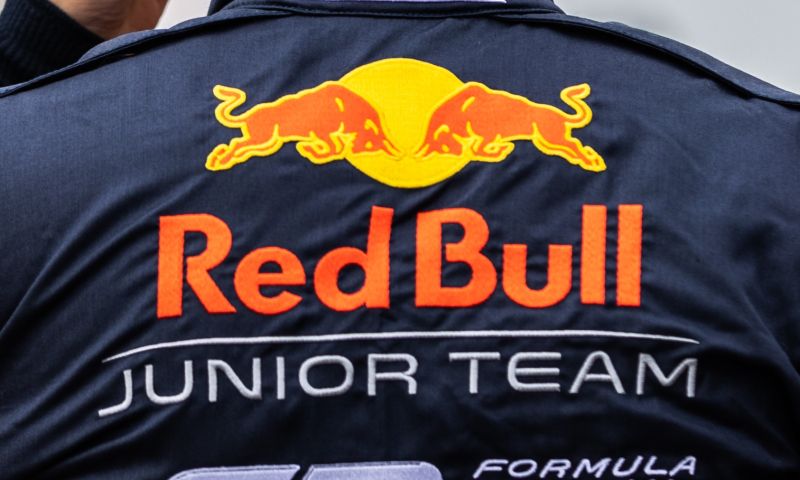Red Bull Contentpool
F1 News

Red Bull and Marko show how to run a training programme
- GPblog.com
Red Bull's training has been delivering many talents to Formula 1 for years, and Pierre Gasly's move to Alpine is further proof that Helmut Marko and his team are doing a good job. Why is it, however, that there has been little through-flow in the in-house teams in recent years?
Red Bull's training programme
Since Red Bull Racing entered Formula 1 in 2005, Marko's training programme has been a common thread for the brand. Sebastian Vettel was the first name to really break through at Red Bull Racing and also win the world title with the team, but since then Daniel Ricciardo, Daniil Kvyat, Max Verstappen, Pierre Gasly and Alexander Albon also made it to the top team in Formula 1.
Red Bull also has something within its programme that an Alpine Academy does not have: a B-team. In 2006, Red Bull also bought over Minardi and renamed it Toro Rosso. Franz Tost was put in charge of this team that would mainly serve as a test for young talents. The aforementioned names struck for testing with this team, but Sebastien Bourdais, Jaime Alguersuari, Sebastien Buemi, Jean-Eric Vergne and Carlos Sainz also got a chance here. All were given a chance in F1 and it did a lot of good for their later careers.
That is also what Red Bull stands for. Of course, with its own training, it hopes to pick out the very best driver as early as possible so that the competition cannot seize them, but the main role for training is to offer (financial) support to young talents in order to increase their chances of a career in motorsport.
Red Bull drivers in F1
Looking at the 2022 F1 grid, it is therefore noticeable that a large group of drivers will come from Red Bull's training programme. Besides the drivers from Red Bull Racing and AlphaTauri, Sainz (Ferrari), Vettel (Aston Martin), Albon (Williams) and Ricciardo (McLaren) are still driving around in F1. Vettel is leaving at the end of 2022 and Ricciardo is also sidelined for a year, but with Gasly, Red Bull is supplying another talent to another team.
So, with two more seats to be allocated for 2023 (where no Red Bull junior is likely to end up), there will be seven 'Red Bull drivers' on the grid in 2023. Yet the project is not sacrosanct at Red Bull. After all, at Red Bull Racing, it has to be delivered and so no young driver will get the spot at any cost. Thus, Gasly and Albon were given the chance, but the team eventually opted for Sergio Perez as an experienced force alongside Verstappen. Similarly, Mark Webber long held his spot alongside Vettel and David Coulthard was the team's first 'leader'.
The bar has also been raised at AlphaTauri. Whereas in the past talents like Alguersuari were perhaps put into F1 a little too early, now talents really have to prove themselves. For instance, Gasly even had to wait a year for his F1 debut after a GP2 title and Ricciardo was first stabled at HRT due to a lack of space.
With Yuki Tsunoda, the team has another young talent in its ranks for 2023. Tsunoda is originally from Honda training and became involved with Red Bull in 2019. The Japanese will enter his third season next year and will have to be considered the new benchmark for talent after Gasly's departure.
De Vries and the raised bar
That the bar is also going up at AlphaTauri is clear given the recruitment of Nyck de Vries. Despite having five Red Bull talents competing in F2, none of those five has managed to convince Marko. Consequently, all of them will not get the chance to debut in F1 in 2023. Isack Hadjar, the number three in Formula 3, seems to be the most talented driver of the current batch.
So Red Bull is no longer pushing everyone through to F1. De Vries is considered an interim solution, but if he proves to be better than Tsunoda, the Dutchman may be considered the new benchmark for talent. Indeed, besides a young driver, Tost seems to prefer someone with more experience. This gives the engineers more direction and the development of the car also goes a lot better.
The Red Bull training has a clear roadmap and, as a talent, you are lucky to get so much financial support. However, the training is not sacred. You still have to prove yourself as a talent. If you do, however, a great road to F1 and even to the top of motorsport's premier class lies ahead of you. Red Bull shows how to run a training team with a clear vision.